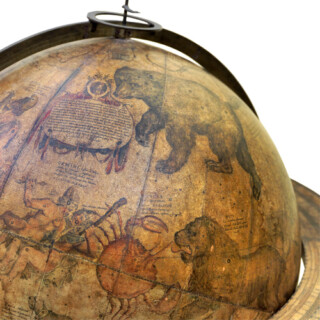-
×
 "Tourists' Books and Maps, selected from the stock of Edward Stanford"
1 × £450
"Tourists' Books and Maps, selected from the stock of Edward Stanford"
1 × £450 -
×
 De Jode’s rare map of west Asia
1 × £3,000
De Jode’s rare map of west Asia
1 × £3,000 -
×
 Forlani's magnificent plan of Venice
1 × £30,000
Forlani's magnificent plan of Venice
1 × £30,000 -
×
 A puzzling gift
1 × £5,000
A puzzling gift
1 × £5,000
South Africa.
London,
Edward Stanford, 55 Charing Cross,
1879
Lithographed map with original hand colour, dissected and mounted on linen, folding into original red cloth covers, yellow publisher's label.
445 by 750mm (17.5 by 29.5 inches).
14726
notes:
An important map of southern Africa, showing the various colonial divisions. It is dominated by the Cape Colony, the main British colony, but shows the complicated, constantly changing patchwork of free states, colonies and possessions making up the lower half of the continent. The area marked as Kaffraria, for instance, was Xhosa territory beyond the Kei River; British Kaffraria was a neighbouring region which had Xhosa inhabitants but had been a colony until 1866, when it...
bibliography:
Henry Hall, 'Modern Geographical Nomenclature, from a Colonial Point of View', Cape Monthly Magazine 3 (1858), pp.359-68; Elri Liebenberg, '"Providing a tolerably correct map of South Africa": the cartography of Henry Hall', paper given at the International Symposium on "Old Worlds-New Worlds": The History of Colonial Cartography 1750-1950, Utrecht University, Utrecht, 2006.
provenance:








